Vegan Globetrotter is supported by our audience. When you purchase through one of our links, we may earn a small affiliate commission. As an Amazon Associate I earn from qualifying purchases. Your cost is not affected.
==================
What Is the Best Cutting Board Size?
A good quality cutting board makes food prep so much easier! But finding the right size cutting board is essential, too. Depending on the type of items you’re cutting and your workspace, you’ll want to select a size that fits your needs. In fact, most plant-based kitchens use a variety of cutting boards that work best for fruit, vegetables, and other vegan foods.
Generally, cutting boards come in small (up to 15×10 inches), medium (15-20×12-18 inches), and large sizes (over 20×18 inches). If you have a lot of counter space, a large board might prove ideal. However, a small board may be the way to go if you’re tight on space or just want to chop something quickly, like herbs. When selecting a size, make sure you also consider the thickness of your cutting board – thinner boards can warp easily and won’t last as long. But they have advantages, too.
With all of the possible choices for a cutting board, how should you select from the sizes and shapes available? I have some useful tips for you as you navigate the world of kitchen cutting boards.
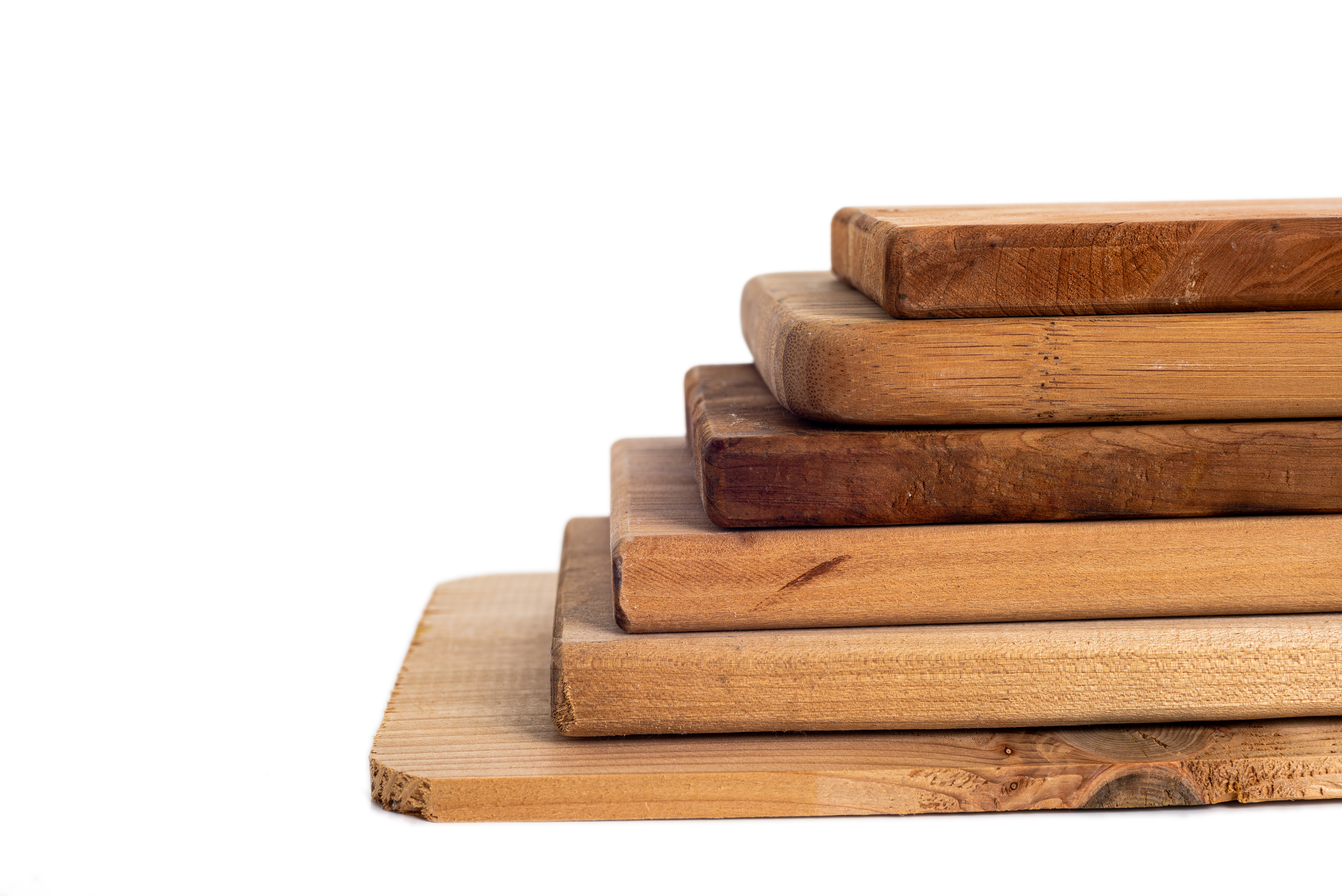
Why Cutting Board Sizes Matter
Cutting boards for general use tend to be made for the omnivore. But we vegans can be much more selective and choose from the wooden cutting boards that fit our culinary needs. Why does the size of the cutting board matter? Imagine that you are cutting a large watermelon. You pull out your cutting board and find that the melon dwarfs the 6-inch by 9-inch size board.
Now, if you only cut large items once or twice a year, you might choose to manage without a large cutting board. But most of us spend time most days chopping and slicing a variety of vegetables and fruit. The size of our cutting board needs to match our usual needs.
Kitchen Size Matters, Too
But don’t just consider the food you prepare. Our cutting boards also need to fit our kitchen. After all, what good is a large cutting board if your counter space is too small to use the board? Additionally, the space to keep your cutting board needs consideration.
If you use it frequently, you might want to ensure counter space so the board is ready when you need it. However, many people choose to set their cutting board aside or even hang it when not in use. Considering all these factors helps ensure you choose the right cutting board size for your needs.
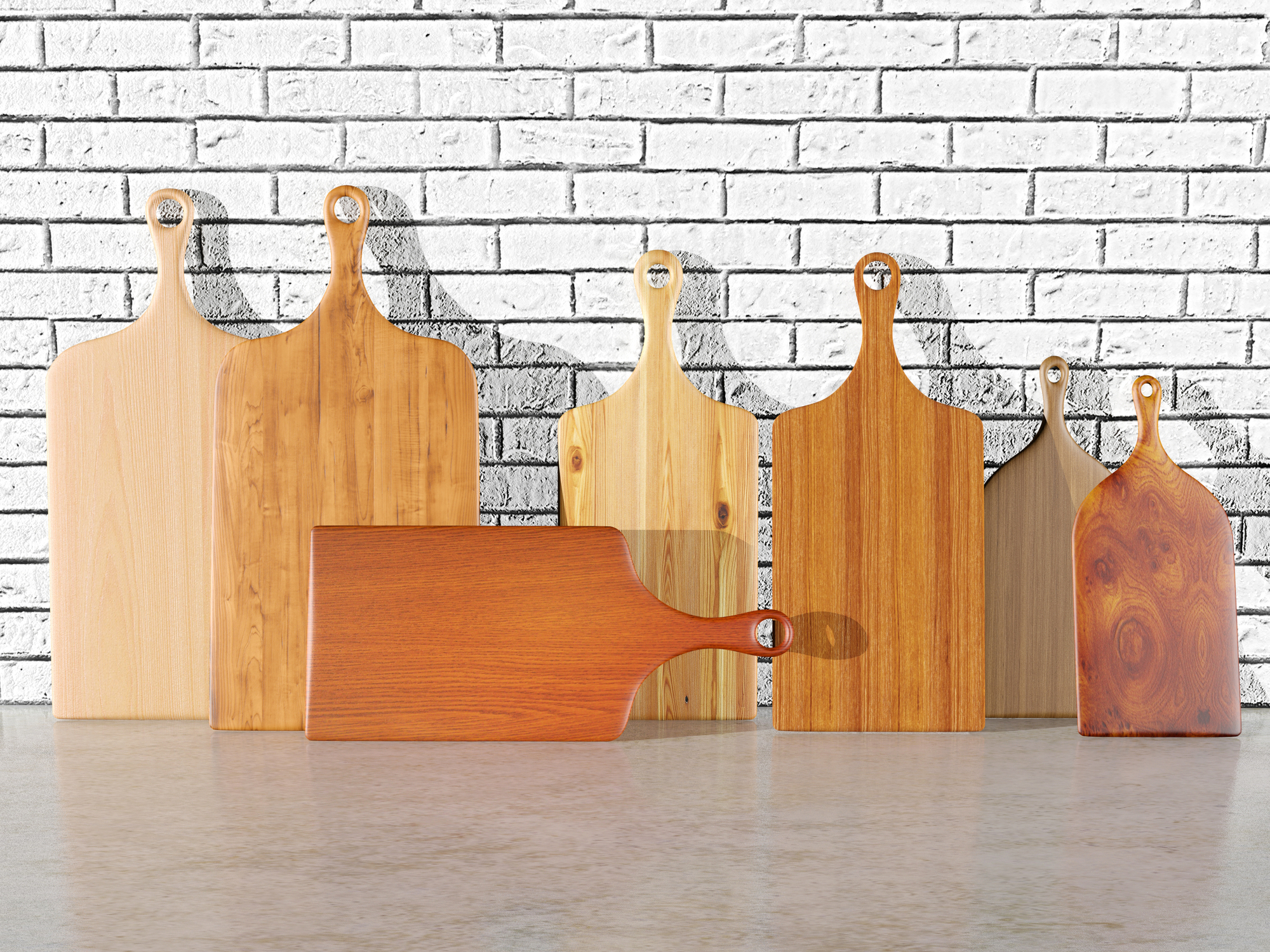
General Cutting Board Sizes
As you browse through wood cutting boards, you see a variety of sizes and shapes. From the small cutting board of 4 inches by 6 inches for cutting herbs or slicing an apple to the large ones that might span more than 20 inches by 30 inches, the range of sizes of cutting boards is quite impressive.
But board sizes include thickness, too. Some might be less than one-half an inch thick while others, often called chopping boards, might exceed 3-inches thick. Generally, a thicker board resists wear and tear better and is less likely to warp. But don’t discount the value of our thin cutting boards. They hold an important place in my kitchen and might in yours, too.
What Size Cutting Board Is Most Popular
Simply put, the most popular size cutting board depends on the usage. For vegetables and fruits, many prefer the standard-size cutting board, which is about 12 inches by 18 inches. This size also works well for slicing bread. But if you do a lot of cooking, you might actually want a larger board.
Small Cutting Board vs. Big Cutting Board
Why Choose a Smaller Cutting Board?
- Use less space to store
- Takes less counter space when using
- Lighter, easier to handle
- Less expensive to purchase
- Use for small charcuterie board sizes
Why Choose a Larger Cutting Board?
- More stable and less apt to move around when cutting on the surface
- Multiple uses due to the size
- More durable, if also thicker, and less apt to warp
- Makes a nice display (although the smaller cutting boards can, too)
- May be used as a large platter, serving board, or charcuterie board
How Big Does Your Board Need to Be?
You know the size of your kitchen. What board sizes seem to fit best either stored or displayed? Consider the food preparation you typically do. Will a small cutting board work? Or would a larger cutting board surface be more usable? And what about the size of your budget? A small board of moderate means might be best for the beginning cook. But if you need a larger board with a smaller budget to purchase, read on for some budget-friendly ideas.
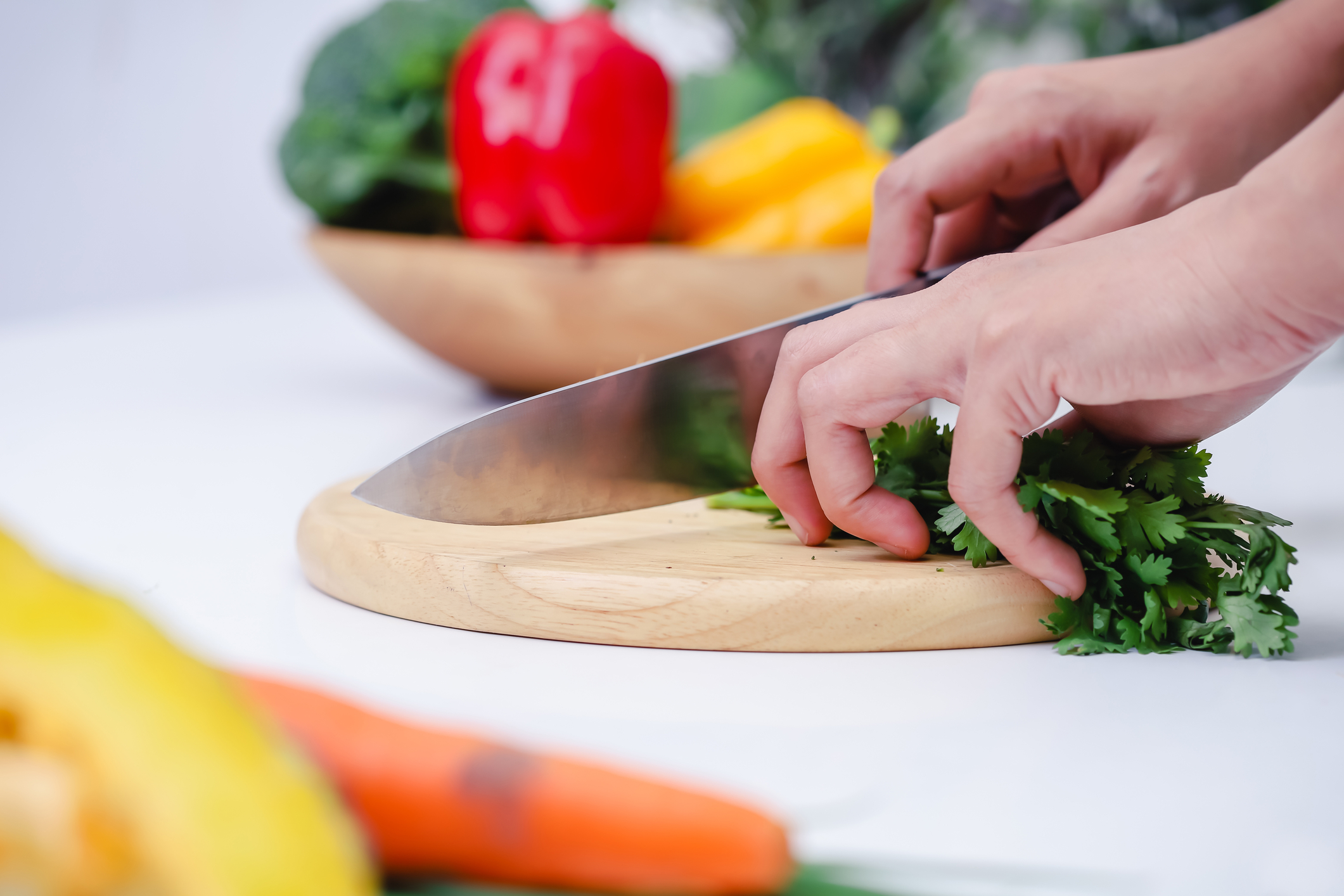
A person is slicing small herbs on a chopping block.
Wooden Cutting Boards – the Best Option?
Need a way to trim your budget and keep the cost of your new cutting board lower? Choosing a material other than wood might seem like a good choice. However, that usually turns out to be more like the old saying, “penny-wise and dollar-foolish.” We explain more about wooden cutting board options in this article.
The Problem With Other Materials Is That Most Are Either:
- not food-safe as they may retain
- not easy to clean
- not durable and usually need replacing frequently
- very hard on the knife, often dulling your knives or even ruining them
- in many cases, they are a mixture of all of the above.
Wooden Cutting Boards Are Optimal Because:
- they clean easily and resist bacteria (see our article on how to clean your cutting board)
- are very durable- with care, they last for generations of use
- with a good quality cutting board wood, they help retain the sharpness of the knife
- good quality wooden cutting boards resist knife marks and stains
What Wood Should I Choose?
Not all wood varieties make good choices for cutting boards. Even though some of these will be advertised as beautiful cutting boards, they are not actually good for this purpose.
Softwoods to Avoid Using for Cutting Boards
- pine
- fir
- cedar
- balsa
- spruce
These softwood boards tend to splinter and crack easily, making them a poor choice for cutting boards.
Hardwoods to Avoid Using for Cutting Boards
- mahogany
- teak
- rosewood
- oak
- birch
- bamboo
These hardwood boards make beautiful furniture but are too hard for cutting board use. In fact, they quickly create dull knives.
Best Choices of Wood for Cutting Board Material
- maple
- walnut
- cherry
- beech
- acacia
Edge Grain Cutting Boards
Edge grain cutting boards create beautiful boards that wear quite well. They are a bit more budget-friendly than the end grain cutting boards but for vegan kitchens, they work almost as well. If cost is a factor, choose the size board you need with the edge grain cut.
End Grain Cutting Boards
Considered the higher-end grain cutting board, end grain proves even more durable than the edge grain cutting boards. And they are often created with beautiful designs to make them as much an art as a kitchen tool. For cutting harder foods, especially meats, experts will recommend end grain cutting boards as the best solution.
However, we have found that since most of our cutting consists of fruit, vegetables, and breads, our edge grain cutting boards perform equally well as the more expensive end grain cutting boards.
The choice then comes down to your personal preference and your budget. If price is a consideration, you usually find that you can afford a much larger edge grain board than you can an end grain for the same price. For more information on Edge vs End grain, see: Cutting Board Options
Best Budget Option
Need the best cost-effective choice for starting out?
Consider These Options:
- Choose a good wooden cutting board with edge grain in the largest size you need and can reasonably afford.
- Shop estate sales. A good wooden cutting board can be cleaned and brought back to almost new finish if the wood itself is in good condition.
- Ask family and friends. Some people acquire extra boards and may have one that they no longer use. It never hurts to ask!
Avoid These:
- buying a cheaper wood that will ruin your knives
- using a cutting board of material that allows food and bacteria to enter into the wood
- glass, metal, or other materials that will dull and ruin your knives.
Are Plastic or Silicone Cutting Boards an Option?
This question comes up often and my honest answer is, maybe. But only as a supplement. I do own silicone cutting boards and use them for certain tasks. They work well when I have family assisting with the cutting and we are all needing a board. Many buy cheap plastic cutting boards that come in a pack of several colors. These are intended to allow you to choose the right board for the type of food you are cutting, thus preventing cross-contamination.
I did test these boards to see if they were worth the cheap pricing. And in my opinion, they are not. I found the cheap plastic cutting boards are better-called counter covers. Let me explain.
Plastic Cutting Boards, My Experience
- First, these boards are very smooth and move around on the counter unless you either weigh them down with an object or use a little tape to hold them in place. And the tape didn’t stick as well as I had hoped. Weighing down with a heavy object takes away from the space you have available to cut. Not a great start to my experiment.
- They are quite thin, meaning that the counter takes some of the pressure of the cutting. Not a huge problem for those of us that are careful with our knives. But some people, especially those learning to use knives, might be a bit hard on the counters.
- The plastic material cuts easily with a knife. With each use, your plastic cutting boards show cuts into the plastic. This leaves an area for food and bacteria to accumulate. I wash our cutting materials with each use but I can’t help but wonder if these cuts are getting completely cleaned and disinfected. Plus, I worry about shreds of plastic in the food.
Are Plastic Cutting Boards Worth Using?
I have decided they are not worth using in our home. I worry about the plastic board material getting into our food. And I’m concerned with the buildup of bacteria within the cuts.
Cutting Board Shape
Most of us consider a cutting board to be rectangular in shape. And probably most boards are. The basic shapes are:
-
Rectangular Shape
Usually longer on the width side, these boards often are the kitchen workhorses. But they can double as serving trays and charcuterie boards, too.
-
Round Cutting Board
Not as common as their rectangular cousins, round cutting boards make a very pretty presentation when set up as serving trays, cheese trays, or charcuterie boards. They also show quite well in the kitchen when not in use. Some people find them a little awkward to use for actual cutting. It seems most of us still expect the standard rectangular board shape.
-
Paddleboard Shape
When you want a board that has a rectangular shape and also a handle, the paddleboard cutting board works well. And they excel as a serving tray, using the handle to deliver the tray to the guests.
-
Other Shapes
Many craftsmen create their own cutting board shapes and styles for a unique look. I’ve seen boards with wave-like curved edges, boards shaped like fish and animals, and even boards shaped like a heart or a letter. The only limit seems to come from the craftsmen.
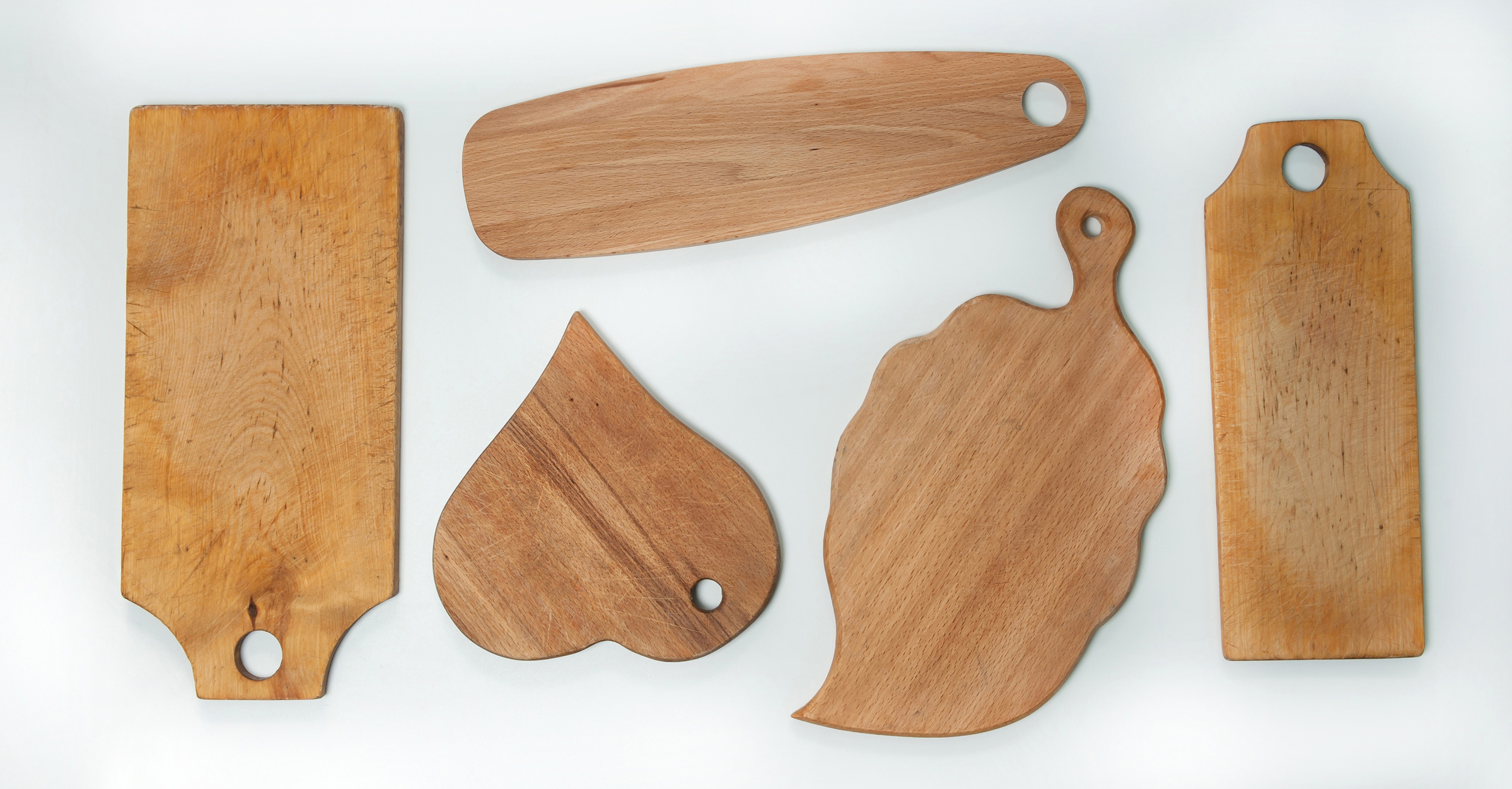
Typical Cutting Board Thickness
How thick does your cutting board need to be? For most vegan kitchens, a thinner board, say 1 1/2 inches to 2 inches thick is fine. I recommend at least an inch thickness, though you will find some boards are thinner.
Restaurants and people cooking for omnivores often have thicker chopping boards. These board sizes often have a thickness of 3 inches or more to accommodate the more intense workout they receive.
The average cutting board size are 12 inches in width and 18 inches in length. This size provides ample room for various cutting tasks while maintaining a balance that ensures it doesn’t occupy excessive countertop space.
Does the Thickness of the Cutting Board Matter
It does matter, but maybe not as much as you think. For vegan kitchens, where we are not dealing with harder cutting, a well-maintained 1 to 2-inch thick board holds up quite well. And a big benefit to the thinner board sizes is that of weight.
Consider that a 4 inch thick board weighs twice as much as a 2 inch of the same dimensions
The problems that you might incur if you are not properly maintaining your board include:
- warping
- staining
- accumulating mold or mildew
- cracking or coming apart
These can all be avoided if you care for your board properly.
Maintaining your cutting board requires
- clean it after each use
- deep-clean and oil it as needed. This may be once a month or more, depending on the use
- make sure you dry it thoroughly before letting it lie flat
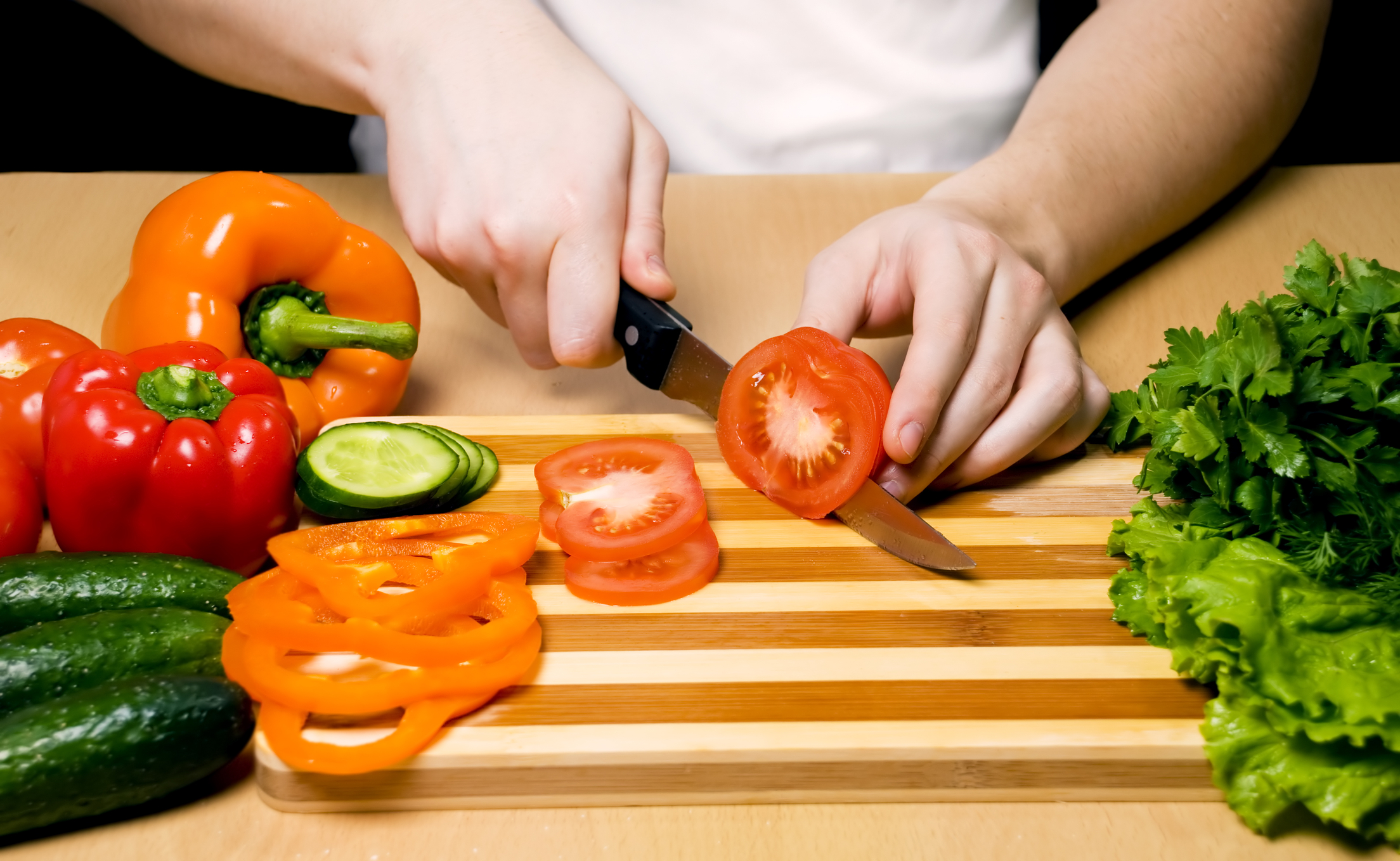
Ready to Choose the Best Cutting Board Size?
Carefully consider the tips and suggestions we’ve outlined. Decide the size board you need based on the usage, your kitchen size, and the size of your budget. Then find the perfect cutting board for the price you can afford. Of course, keep in mind that this is a long-term investment!
Just One?
One final thought, your first cutting board might not be your only cutting board. As you use it, you may discover that you really want or even need a second one. Perhaps your needs grow and a larger cutting board makes sense. Some people find they need a smaller cutting board for those smaller tasks.
In fact, we have several small cutting boards to allow everyone to help with meal preparations. When holidays come around, all of our wooden boards come out to help with meal prep and then serving time.
Charcuterie boards make a great display! For some ideas, check out these articles:
- Favorite Vegan Charcuterie Board Ideas
- Plant Based Charcuterie Board
- Colorful Vegan Charcuterie Board
You Might Also Enjoy These Articles:
Cutting Boards for Vegan Kitchen Use
Best Wooden Cutting Board Options
How to Clean a Wooden Cutting Board
Bamboo Cutting Board is the Worst
Favorite Vegan Charcuterie Board Ideas

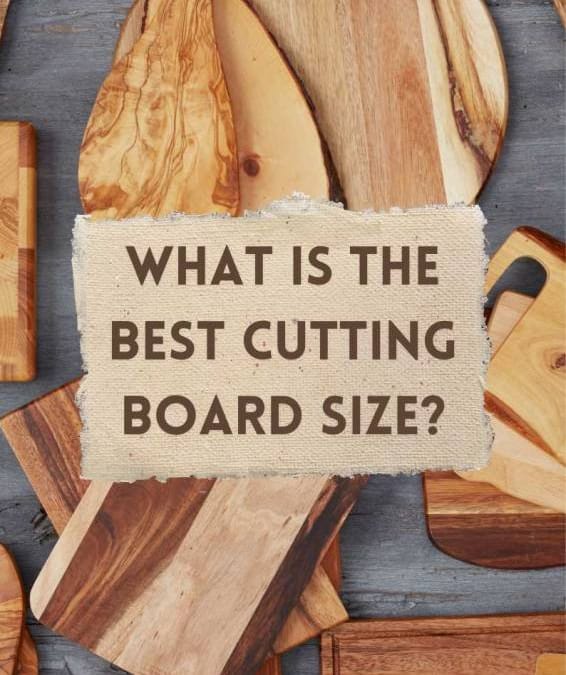



Don't miss out
when new recipes and information are added!
Join our newsletter for free recipes,
healthy living inspiration, and special offers
You have Successfully Subscribed!